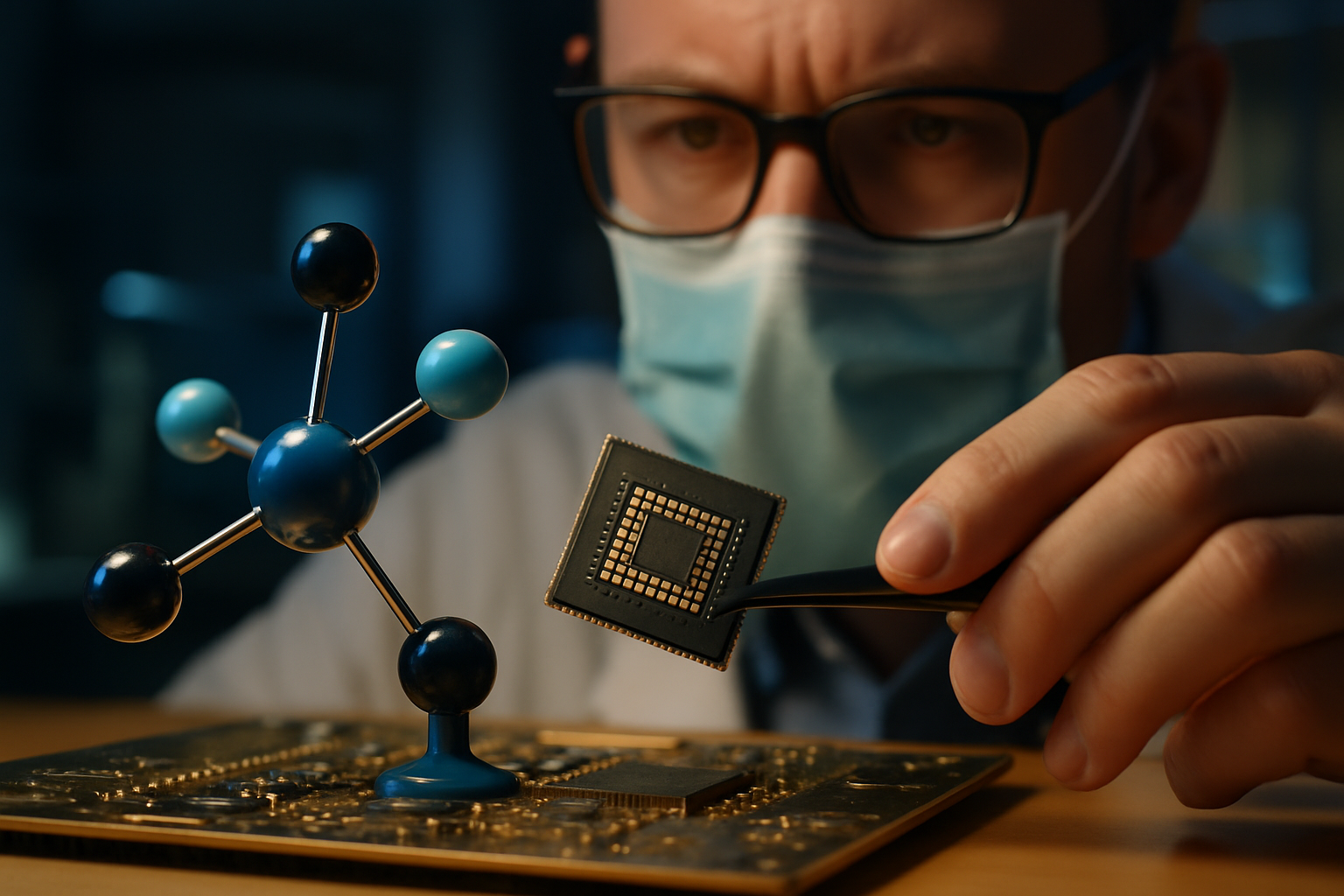Molecular Memory: The Next Frontier in Data Storage
In a world where data is king, the quest for more efficient and compact storage solutions never ends. Enter molecular memory, a groundbreaking technology that promises to revolutionize how we store and access information. This cutting-edge approach harnesses the power of individual molecules to store data, potentially increasing storage density by orders of magnitude compared to current technologies. As researchers make significant strides in this field, we're on the cusp of a new era in data storage that could reshape our digital landscape.

From Theory to Reality
The concept of molecular memory isn’t entirely new, with theoretical groundwork laid decades ago. However, recent advancements in nanotechnology and molecular engineering have brought this once-futuristic idea closer to practical implementation. Scientists have successfully demonstrated data storage and retrieval using various molecular systems, including organic compounds and metal-organic frameworks.
How It Works
At its core, molecular memory leverages the unique properties of certain molecules to represent binary data. This can be achieved through various mechanisms, such as changes in molecular structure, electron spin, or even the position of individual atoms within a molecule. One promising approach involves using molecules that can switch between two stable states, effectively creating a molecular ‘bit’ that can be read and written.
Overcoming Challenges
While the potential of molecular memory is immense, significant hurdles remain. Stability is a major concern, as molecules can be sensitive to environmental factors like temperature and electromagnetic fields. Researchers are exploring ways to enhance the robustness of molecular memory systems, including protective coatings and controlled environments.
Reading and Writing at the Molecular Level
Another crucial aspect of molecular memory development is creating reliable methods for reading and writing data. Advanced microscopy techniques, such as scanning tunneling microscopy, have shown promise in manipulating individual molecules. However, scaling these processes for practical, high-speed data operations remains a significant challenge.
The Road to Commercialization
As with any emerging technology, the path from laboratory success to commercial viability is long and complex. While no commercial molecular memory products are currently available, several tech giants and startups are investing heavily in this field. Industry experts estimate that the first practical applications could hit the market within the next 5-10 years, with initial prices likely to be premium due to the novelty and complexity of the technology.
Potential Applications
The implications of molecular memory extend far beyond simply cramming more data into smaller spaces. Ultra-high-density storage could enable new paradigms in computing, from more powerful AI systems to quantum computing interfaces. In the realm of consumer electronics, imagine smartphones with petabytes of storage or entire libraries contained in devices the size of a coin.
Environmental Considerations
One often overlooked aspect of molecular memory is its potential environmental impact. By dramatically increasing storage density, this technology could significantly reduce the energy consumption and physical footprint of data centers worldwide. Additionally, some molecular memory systems might use more environmentally friendly materials compared to traditional semiconductor-based storage.
The Future Landscape of Data Storage
As molecular memory technology matures, it’s likely to coexist with and complement other storage technologies rather than completely replacing them. The unique properties of molecular systems make them particularly suited for certain applications, such as archival storage or specialized scientific instruments.
In conclusion, molecular memory represents a fascinating frontier in data storage technology. While significant challenges remain, the potential benefits are too substantial to ignore. As researchers continue to push the boundaries of what’s possible at the molecular level, we may be witnessing the early stages of a paradigm shift in how we store and interact with information. The journey from bits to molecules is well underway, and the destination promises to be nothing short of revolutionary for the world of technology and beyond.





